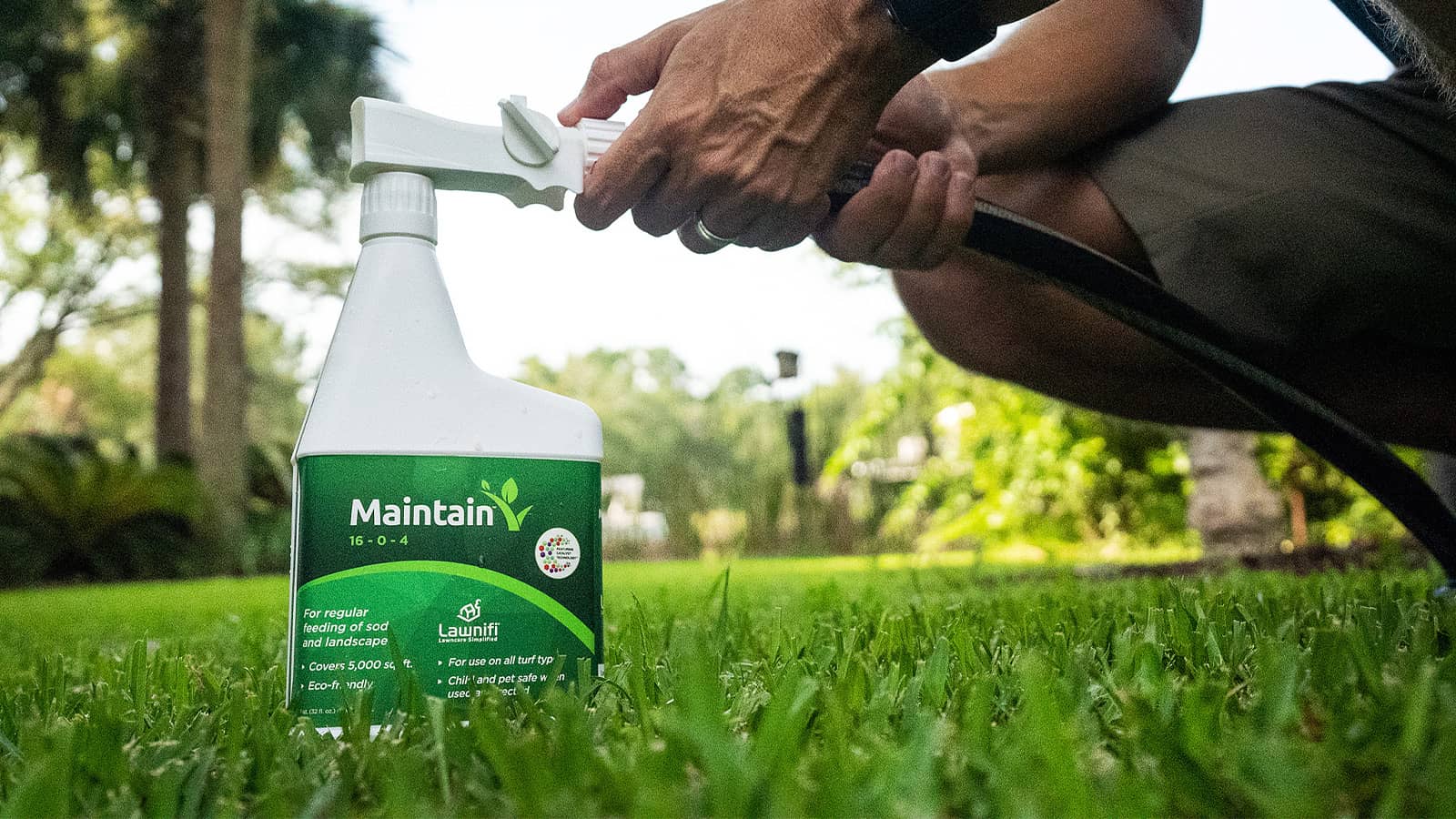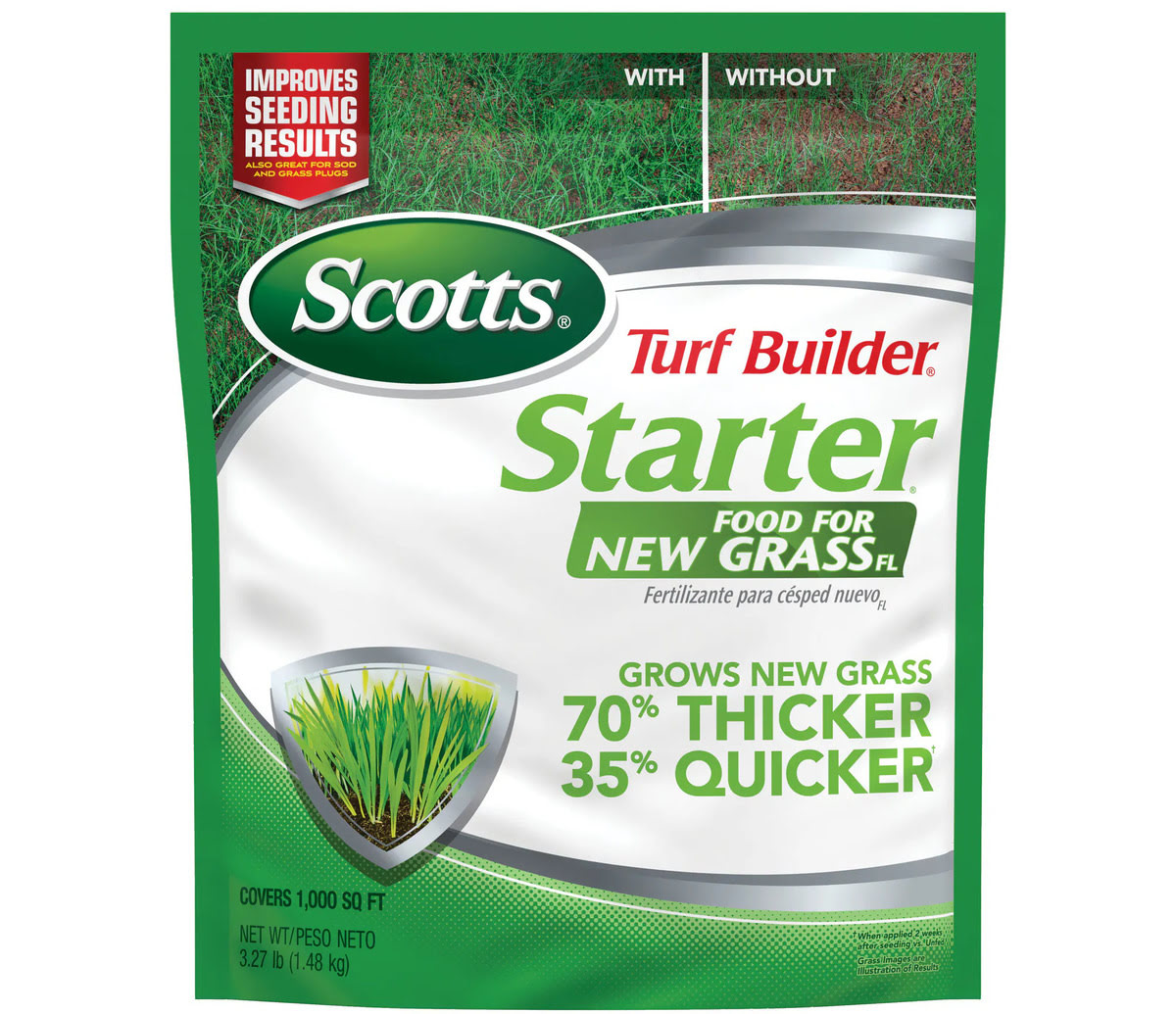Home>Gardening Tips and Tricks>Eco-Friendly Gardening>What Is In Grass Fertilizer


Eco-Friendly Gardening
What Is In Grass Fertilizer
Published: August 5, 2023
Learn about eco-friendly gardening and discover what ingredients are typically found in grass fertilizer. Create a healthy and sustainable garden with our informative guide!
(Many of the links in this article redirect to a specific reviewed product. Your purchase of these products through affiliate links helps to generate commission for Chicagolandgardening.com, at no extra cost. Learn more)
Table of Contents
- Introduction
- Benefits of Using Grass Fertilizer
- Main Components of Grass Fertilizer
- Nitrogen Content in Grass Fertilizer
- Phosphorus Content in Grass Fertilizer
- Potassium Content in Grass Fertilizer
- Secondary Nutrients in Grass Fertilizer
- Micronutrients in Grass Fertilizer
- Organic vs. Synthetic Grass Fertilizer
- How to Choose the Right Grass Fertilizer
- Conclusion
Introduction
Welcome to the world of eco-friendly gardening! In today’s fast-paced and increasingly urbanized society, reconnecting with nature and making sustainable choices has become more important than ever. One way to do this is through eco-friendly gardening practices, and a key aspect of successful gardening is using the right grass fertilizer.
Grass fertilizer serves as a nutrient boost for your lawn, providing essential elements that promote healthy growth, vibrant color, and resilience against pests and diseases. However, not all fertilizers are created equal. Some contain harmful chemicals that can negatively impact the environment and your health, while others are specifically formulated to be eco-friendly.
By opting for eco-friendly grass fertilizers, you can minimize your carbon footprint and take a proactive step towards sustainability. These fertilizers are made from natural, biodegradable, and renewable sources, reducing the use of synthetic chemicals that can leach into groundwater and harm beneficial organisms.
In this article, we will explore the benefits of using eco-friendly grass fertilizers, delve into their main components, discuss the importance of choosing the right fertilizer for your lawn, and provide practical tips to help you make informed decisions as an eco-conscious gardener.
Benefits of Using Grass Fertilizer
Using grass fertilizer offers numerous benefits for your lawn and the environment. Let’s explore some of the key advantages:
- Promotes Healthy Growth: Grass fertilizer provides essential nutrients that are necessary for your lawn’s growth and development. These nutrients, such as nitrogen, phosphorus, and potassium, help to strengthen the roots, improve overall plant health, and ensure lush, green grass.
- Enhances Color: Fertilizers contain pigments and micronutrients that can enhance the color and vibrancy of your lawn. With the right balance of nutrients, your grass will boast a rich, deep green shade that is visually appealing.
- Increases Resilience: Properly fertilized grass is more resilient to environmental stressors such as drought, heat, cold, and foot traffic. Fertilizers improve the plant’s ability to withstand these challenges, resulting in a healthier and long-lasting lawn.
- Suppresses Weeds and Pests: A well-maintained lawn with regular fertilization can outcompete weeds by creating a dense turf. Additionally, certain fertilizers contain organic ingredients that can deter pests, reducing the need for harmful pesticides.
- Improves Soil Quality: Fertilizers contribute to improving the fertility and structure of the soil. By adding organic matter and nutrients, they enhance microbial activity, increase water retention, and create a favorable environment for beneficial organisms.
- Environmental Benefits: Eco-friendly grass fertilizers are designed to minimize negative impacts on the environment. They reduce the leaching of harmful chemicals into water bodies, protect biodiversity, and contribute to sustainable gardening practices.
By using grass fertilizers, you can ensure that your lawn thrives while minimizing environmental harm. The next section will uncover the main components of grass fertilizers.
Main Components of Grass Fertilizer
Grass fertilizers are formulated with a combination of essential nutrients to support the healthy growth of your lawn. These nutrients can be categorized into three primary components: nitrogen, phosphorus, and potassium. These are commonly referred to as NPK, representing the elemental symbols for these nutrients.
Nitrogen (N): Nitrogen is responsible for promoting lush green growth and leaf development. It is a vital component of amino acids, proteins, and chlorophyll, which are essential for photosynthesis. Nitrogen encourages rapid growth, helps with recovery from stress, and enhances the overall appearance of your lawn.
Phosphorus (P): Phosphorus plays a vital role in root development, flowering, and seed production. It aids in energy transfer within the plant and promotes strong root systems, ensuring sufficient nutrient uptake. Phosphorus is especially beneficial during the early stages of grass growth.
Potassium (K): Potassium is essential for overall plant health and resilience. It helps regulate water uptake, improves disease resistance, and enhances tolerance to drought and extreme temperatures. Potassium ensures that your lawn remains strong and healthy, even under challenging conditions.
In addition to the primary nutrients, grass fertilizers may also contain secondary nutrients and micronutrients. Secondary nutrients include calcium, magnesium, and sulfur, which are required in smaller quantities but still play a crucial role in plant growth and function. Micronutrients, such as iron, manganese, zinc, and copper, are needed in trace amounts and contribute to various physiological processes within the grass.
The ratio of NPK on a fertilizer package indicates the available percentage by weight of each nutrient. For example, a fertilizer with a ratio of 10-5-5 would contain 10% nitrogen, 5% phosphorus, and 5% potassium.
Understanding the main components of grass fertilizers is essential for choosing the right product for your lawn. In the next section, we will dive deeper into the role of nitrogen in grass fertilizers.
Nitrogen Content in Grass Fertilizer
Nitrogen is a critical element in grass fertilizers and plays a key role in promoting healthy leaf growth and overall plant development. It is responsible for the vibrant green color that many homeowners desire for their lawns.
When applied in the right amounts, nitrogen stimulates the production of chlorophyll, which is essential for photosynthesis. This process allows plants to convert sunlight into energy, enabling them to grow and flourish. Nitrogen also aids in the production of amino acids and proteins, which are the building blocks for plant cells and tissues.
However, it is important to strike the right balance when applying nitrogen-containing fertilizers. Too much nitrogen can lead to excessive leaf growth, making the grass more susceptible to disease, insect damage, and environmental stress. It can also contribute to nutrient imbalances and water pollution if not managed properly.
On the other hand, insufficient nitrogen can result in pale, yellowed grass that lacks vigor and struggles to compete with weeds. It is crucial to apply the appropriate amount of nitrogen based on the specific needs of your lawn and the recommended guidelines.
There are different types of nitrogen sources used in grass fertilizers. Some examples include:
- Quick-Release Nitrogen: This type of nitrogen is readily available to the grass and provides immediate greening. However, it is quickly depleted and may require more frequent applications.
- Slow-Release Nitrogen: Slow-release nitrogen is gradually released over time, providing a steady supply of nutrients to the grass. This helps to prevent rapid growth spurts and reduces the risk of nutrient runoff.
- Organic Nitrogen: Organic fertilizers, such as compost or manure, contain natural sources of nitrogen. These materials break down gradually, releasing nitrogen slowly and improving soil health.
- Urea Nitrogen: Urea is a common source of nitrogen in synthetic fertilizers. It is quickly absorbed by the plants and converted into a usable form.
By understanding the nitrogen content in grass fertilizers and selecting the appropriate type and amount, you can ensure that your grass receives the right nourishment for optimal growth and health. In the next section, we will explore the role of phosphorus in grass fertilizers.
Phosphorus Content in Grass Fertilizer
Phosphorus is an important nutrient in grass fertilizers that plays a vital role in supporting root development, flowering, and seed production. It is necessary for overall plant growth and helps ensure the long-term health and resilience of your lawn.
Phosphorus is particularly crucial during the early stages of grass establishment. It encourages robust root growth, enabling the lawn to establish a strong foundation for nutrient uptake and water absorption. Adequate phosphorus levels also promote vigorous shoot growth, resulting in a lush and healthy lawn.
In addition to root development and shoot growth, phosphorus contributes to the production of adenosine triphosphate (ATP), which is the energy currency of cells. ATP fuels various biochemical reactions within the plant, supporting important processes such as photosynthesis, respiration, and nutrient transport.
It is important to note that excessive phosphorus levels in the soil can be detrimental. High phosphorus concentrations can lead to nutrient imbalances and may contribute to water pollution through runoff, especially in areas near water bodies. Before applying phosphorus-containing fertilizers, it is crucial to test the soil to determine the existing phosphorus levels and only apply additional phosphorus if necessary.
When choosing a grass fertilizer, it is essential to select one with an appropriate phosphorus percentage based on your lawn’s needs and the recommendations provided by soil tests. Many regions have regulations in place that restrict the use of phosphorus in fertilizers unless specifically required by the soil conditions.
There are various forms of phosphorus used in grass fertilizers, including:
- Phosphoric Acid: This is a common source of phosphorus in synthetic fertilizers. It is quickly absorbed by the plants and provides a readily available form of phosphorus.
- Rock Phosphate: Rock phosphate is a natural source of phosphorus that is slower to break down and release its nutrients. It is often used in organic fertilizers.
- Bone Meal: Derived from animal bones, bone meal is another organic source of phosphorus. It breaks down slowly and provides a long-lasting supply of phosphorus.
By understanding the importance of phosphorus in grass fertilizers and selecting the appropriate type and amount, you can support strong root development and overall plant growth in your lawn. In the next section, we will explore the role of potassium in grass fertilizers.
Potassium Content in Grass Fertilizer
Potassium is an essential nutrient in grass fertilizers that plays a crucial role in maintaining the overall health and resilience of your lawn. It is involved in various physiological processes within the plant, contributing to its strength, disease resistance, and ability to withstand environmental stressors.
One of the key functions of potassium is its role in regulating water uptake and transpiration in plants. This helps the grass maintain proper hydration levels, even in hot and dry conditions. Potassium ensures that the plant’s cells are adequately turgid, promoting plant vigor and preventing wilting.
Potassium also plays a vital role in enzyme activation, protein synthesis, and carbohydrate metabolism, all of which are essential for energy production and overall plant growth. It aids in the efficient transport of sugars, allowing the grass to allocate energy to its different parts, including the roots, stems, and leaves.
Furthermore, potassium improves the grass’s ability to withstand disease and pest attacks. It enhances the plant’s defense mechanisms, making it less susceptible to fungal infections and certain insect pests. Proper potassium levels can also mitigate the impact of environmental stressors such as extreme temperatures, drought, and salinity.
When selecting a grass fertilizer, it is important to consider the potassium content based on your lawn’s needs and the soil test results. Maintaining an appropriate balance between nitrogen, phosphorus, and potassium is crucial for optimal grass health and growth. Fertilizers with a balanced NPK ratio are recommended for overall lawn maintenance.
Some common sources of potassium in grass fertilizers include:
- Potassium Chloride: Potassium chloride is a common synthetic source of potassium. It dissolves easily in water and is readily available to the plants.
- Potassium Sulfate: Another synthetic source, potassium sulfate provides both potassium and sulfur to the grass. It is suitable for alkaline soils that may have excess calcium.
- Wood Ash: Wood ash is a natural source of potassium that can be used as a fertilizer. However, it should be used sparingly, as it can raise the soil’s pH level.
By ensuring an adequate supply of potassium through proper fertilization, you can help your lawn thrive and maintain its health and resilience. In the next section, we will explore the role of secondary nutrients in grass fertilizers.
Secondary Nutrients in Grass Fertilizer
While nitrogen, phosphorus, and potassium are the primary nutrients in grass fertilizers, there are also secondary nutrients that play important roles in supporting the overall health and growth of your lawn. These secondary nutrients include calcium, magnesium, and sulfur.
Calcium (Ca): Calcium is vital for cell wall development and overall plant structure. It helps to strengthen the grass, promoting sturdy stems and enhanced resistance to diseases and pests. Calcium also aids in proper nutrient uptake by improving the soil’s cation exchange capacity.
Magnesium (Mg): Magnesium is a key component of chlorophyll, the pigment responsible for photosynthesis. It is essential for the efficient use of sunlight and the production of energy in the grass. Magnesium also plays a role in enzyme activation and helps to maintain proper pH levels in the soil.
Sulfur (S): Sulfur is involved in various metabolic processes in plants and is essential for protein synthesis. It contributes to the production of amino acids, enzymes, and vitamins, supporting overall plant growth and health. Sulfur also enhances root development and improves nutrient uptake in the grass.
While secondary nutrients are required in smaller quantities compared to the primary nutrients, their availability is still crucial for maintaining balanced nutrition in the grass. Adequate levels of calcium, magnesium, and sulfur ensure that the grass has the necessary building blocks for growth, resilience, and proper functioning.
Grass fertilizers may contain these secondary nutrients, either through natural or synthetic sources. It is essential to consider the soil test results and the specific needs of your lawn when choosing a grass fertilizer. This ensures that your lawn receives the appropriate balance of primary and secondary nutrients for optimal growth.
By providing your grass with the secondary nutrients it needs, you can enhance the overall health and appearance of your lawn. In the next section, we will explore the role of micronutrients in grass fertilizers.
Micronutrients in Grass Fertilizer
In addition to the primary and secondary nutrients, grass fertilizers also contain micronutrients, which are required in trace amounts for optimal plant growth and development. These micronutrients include iron, manganese, zinc, copper, boron, molybdenum, and chlorine.
Iron (Fe): Iron is essential for chlorophyll production and is responsible for the green color in leaves. It is crucial for photosynthesis and plays a role in energy transfer within the plant. Iron deficiency can lead to yellowing of the grass, a condition known as chlorosis.
Manganese (Mn): Manganese supports enzyme activity, particularly during the photosynthetic process. It aids in the breakdown of carbohydrates, contributing to energy production. Manganese is also involved in the synthesis of chlorophyll and is essential for maintaining healthy leaves.
Zinc (Zn): Zinc plays a vital role in plant metabolism, hormone production, and enzyme function. It is involved in the synthesis of proteins and nucleic acids, supporting overall plant growth and development. Zinc deficiency can cause stunted growth and reduced nutrient uptake in the grass.
Copper (Cu): Copper is essential for enzyme activity and supports various physiological processes in plants, such as photosynthesis and respiration. It also aids in the synthesis of lignin, a compound that provides strength to cell walls. Copper deficiency in grass can lead to wilting and poor growth.
Boron (B): Boron is necessary for cell division and is involved in the movement of sugars and other nutrients within the plant. It also plays a role in the production and function of plant hormones. Boron deficiency can lead to distorted growth and poor flower and seed production.
Molybdenum (Mo): Molybdenum is required for nitrogen fixation in plants and is involved in the conversion of nitrogen into usable forms. It is an essential component of enzymes that are responsible for nitrogen metabolism. Molybdenum deficiency can result in reduced nitrogen uptake by the grass.
Chlorine (Cl): Chlorine is involved in regulating osmotic balance in plant cells and plays a role in stomatal function and photosynthesis. It is necessary for the proper functioning of plant metabolism. Chlorine deficiency is relatively rare and often occurs alongside other nutrient imbalances.
While micronutrients are required in small quantities, their presence is crucial for maintaining optimal health and growth in the grass. Grass fertilizers may contain these micronutrients to ensure that your lawn receives the necessary micronutrient balance for its overall well-being.
It is important to note that micronutrient deficiencies or excesses can impact plant health, so it is crucial to follow recommended application rates and consider soil test results when choosing a grass fertilizer.
With an understanding of the micronutrients in grass fertilizers, you can provide your lawn with the complete nutritional support it needs to thrive. In the next section, we will explore the differences between organic and synthetic grass fertilizers.
Organic vs. Synthetic Grass Fertilizer
When choosing a grass fertilizer, you have two main options: organic and synthetic. Both types of fertilizers have their own advantages and considerations, so let’s explore the differences between them.
Organic Fertilizer: Organic grass fertilizers are derived from natural sources such as plant and animal byproducts. They are minimally processed and often contain a mix of nutrients, micronutrients, and organic matter. Organic fertilizers release nutrients slowly over time as they break down, providing a gradual and long-lasting nutrient supply to the grass. They also contribute to improving soil health by increasing organic matter content and enhancing microbial activity.
One of the main benefits of organic fertilizers is their eco-friendly nature. They are typically produced using sustainable practices without the use of synthetic chemicals or genetically modified organisms. Organic fertilizers also reduce the risk of water pollution and minimize the potential harm to beneficial organisms, such as earthworms and microorganisms in the soil.
Synthetic Fertilizer: Synthetic grass fertilizers are manufactured using chemical processes. They are typically formulated to deliver precise nutrient ratios and may have a faster release of nutrients compared to organic fertilizers. Synthetic fertilizers can provide quick greening and are readily available in a wide range of formulations.
One advantage of synthetic fertilizers is their convenience and efficiency. They can be easily applied and provide immediate results. However, it is crucial to follow instructions and avoid overapplication, as excess nutrients can leach into water bodies and contribute to nutrient pollution.
When choosing between organic and synthetic grass fertilizers, it is essential to consider your gardening goals, environmental concerns, and the specific needs of your lawn. Organic fertilizers are often preferred by those seeking a more sustainable and natural approach to lawn care, while synthetic fertilizers may be chosen for their precise nutrient content and faster results.
Ultimately, the decision depends on your personal preferences and the specific requirements of your lawn. It is also worth noting that some gardeners opt for a combination of both organic and synthetic fertilizers to harness the benefits of each.
Now that we have explored the differences between organic and synthetic grass fertilizers, we can move on to the next section, where we will discuss how to choose the right grass fertilizer for your lawn.
How to Choose the Right Grass Fertilizer
Choosing the right grass fertilizer is crucial for promoting optimal growth and maintaining the health of your lawn. Here are some factors to consider when selecting the appropriate fertilizer:
- Soil Test: Conduct a soil test to determine the nutrient levels and pH of your soil. This will help you understand any deficiencies or imbalances and guide your fertilizer selection.
- Nutrient Requirements: Consider the specific nutrient requirements of your grass species or variety. Different types of grass may have different nutrient needs, so choose a fertilizer that matches those requirements.
- Nutrient Ratios: Look for a fertilizer that provides a balanced ratio of nitrogen, phosphorus, and potassium (NPK). The ideal ratio may vary depending on the stage of growth and the specific needs of your lawn. A soil test can help determine the appropriate ratio.
- Release Rate: Decide whether you prefer a quick-release or slow-release fertilizer. Quick-release fertilizers provide immediate results but may require more frequent applications, while slow-release fertilizers provide a steady supply of nutrients over an extended period.
- Organic vs. Synthetic: Consider your preference for organic or synthetic fertilizers. Organic options are more sustainable and environmentally friendly, while synthetic options provide precise nutrient ratios and faster results.
- Application Method: Determine your preferred method of application, such as granular or liquid form. Granular fertilizers are often spread evenly across the lawn, while liquid fertilizers can be applied as a foliar spray or through irrigation systems.
- Environmental Impact: Consider the potential environmental impact of the fertilizer, such as nutrient runoff. Choose a fertilizer with controlled-release formulations or use best management practices to minimize environmental harm.
By considering these factors and tailoring your choice of grass fertilizer to meet the specific needs of your lawn, you can ensure that your grass receives the appropriate nutrients for healthy growth and vibrant appearance.
Remember to follow the manufacturer’s instructions for application rates and timings. Overapplication of fertilizers can lead to nutrient imbalances, environmental pollution, and even damage to the grass. Always use fertilizers responsibly and in accordance with local regulations.
With the right grass fertilizer and proper application, you can create a lush, vibrant, and eco-friendly lawn that enhances the beauty of your outdoor space.
Conclusion
Cultivating an eco-friendly garden starts with choosing the right grass fertilizer. By opting for eco-friendly options, such as organic fertilizers, you can promote the health and vitality of your lawn while minimizing harm to the environment. These fertilizers provide essential nutrients, promote healthy growth, enhance color, increase resilience, suppress weeds and pests, and improve soil quality.
Understanding the main components of grass fertilizers, including nitrogen, phosphorus, potassium, secondary nutrients, and micronutrients, is essential for maintaining a balanced nutrient profile in your lawn. Making informed decisions about the type and amount of fertilizer to use can help you achieve the lush, green lawn you desire.
When choosing between organic and synthetic fertilizers, consider your gardening goals, environmental concerns, and the specific needs of your lawn. Organic options offer sustainability and natural practices, while synthetic options provide precision and speed. Ultimately, it’s about finding the best fit for your lawn care routine.
Remember to conduct a soil test, determine nutrient requirements, and select a fertilizer with the appropriate nutrient ratios and release rate. Choose an application method that suits your preferences, and always consider the environmental impact of the fertilizer.
With the right grass fertilizer and responsible application, you can cultivate a thriving, eco-friendly garden that not only enhances the beauty of your outdoor space but also contributes to a more sustainable future.








